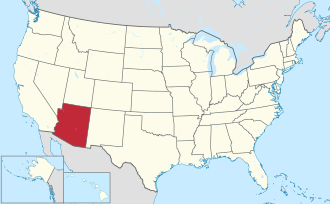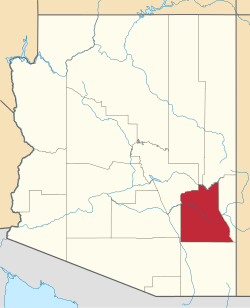2010 census
As of the census of 2010, there were 37,220 people, 11,120 households, and 8,188 families living in the county. [16] The population density was 8.1 inhabitants per square mile (3.1 inhabitants/km2). There were 12,980 housing units at an average density of 2.8 units per square mile (1.1 units/km2). [17] The racial makeup of the county was 72.1% white, 14.4% American Indian, 1.8% black or African American, 0.5% Asian, 0.1% Pacific islander, 8.2% from other races, and 2.8% from two or more races. Those of Hispanic or Latino origin made up 30.4% of the population. [16] In terms of ancestry, 16.1% were English, 9.2% were German, 6.9% were Irish, and 4.3% were American. [18]
Of the 11,120 households, 41.4% had children under the age of 18 living with them, 52.0% were married couples living together, 15.5% had a female householder with no husband present, 26.4% were non-families, and 21.7% of all households were made up of individuals. The average household size was 3.01 and the average family size was 3.50. The median age was 31.6 years. [16]
The median income for a household in the county was $41,683 and the median income for a family was $48,005. Males had a median income of $41,732 versus $25,990 for females. The per capita income for the county was $15,644. About 15.9% of families and 20.0% of the population were below the poverty line, including 26.3% of those under age 18 and 9.7% of those age 65 or over. [19]
2000 census
As of the census of 2000, there were 33,489 people, 10,116 households, and 7,617 families living in the county. The population density was 7 people per square mile (2.7 people/km2). There were 11,430 housing units at an average density of 2 units per square mile (0.77 units/km2). The racial makeup of the county was 67.1% White, 1.9% Black or African American, 15.0% Native American, 0.6% Asian, <0.1% Pacific Islander, 13.4% from other races, and 2.1% from two or more races. 27.0% of the population were Hispanic or Latino of any race. 16.4% reported speaking Spanish at home, while 6.4% speak a Southern Athabaskan language. [20]
There were 10,116 households, out of which 39.0% had children under the age of 18 living with them, 57.2% were married couples living together, 13.4% had a female householder with no husband present, and 24.7% were non-families. 20.9% of all households were made up of individuals, and 9.9% had someone living alone who was 65 years of age or older. The average household size was 2.99 and the average family size was 3.47.
In the county, the population was spread out, with 30.1% under the age of 18, 12.0% from 18 to 24, 27.3% from 25 to 44, 18.7% from 45 to 64, and 11.9% who were 65 years of age or older. The median age was 31 years. For every 100 females, there were 112.5 males. For every 100 females age 18 and over, there were 115.1 males.
The median income for a household in the county was $29,668, and the median income for a family was $34,417. Males had a median income of $30,524 versus $20,739 for females. The per capita income for the county was $12,139. About 17.7% of families and 23.0% of the population were below the poverty line, including 30.2% of those under age 18 and 13.6% of those age 65 or over.







